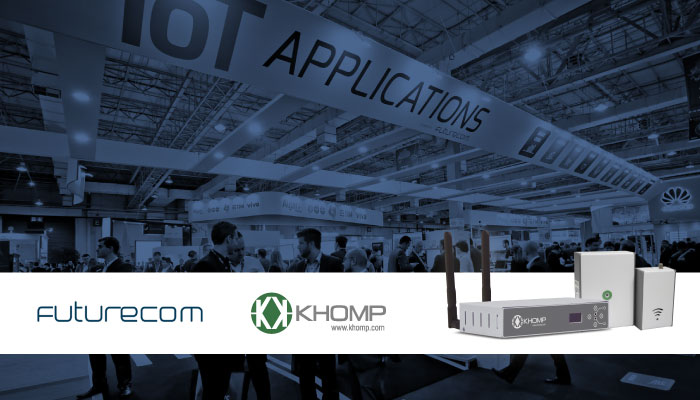What are the business opportunities with the IoT – Internet of Things? Khomp’s Blog invites the readers to rethink the IoT considering the needs of the three sectors that have demonstrated a wide openness to this technology: Agribusiness, Urbanism (i.e., Smart Cities), and Industry 4.0!
“Regardless of the market, the use of IoT is a key resource for transforming information into knowledge. That is, from data observation, it is possible to develop strategies to improve process performance and to discover failures and innovation points,” says Sandro Kischner, IoT Product Manager at Khomp.
Opportunities in the field
Those who closely follow the Agribusiness market are able to notice a growing interest in IoT technologies. “On a daily basis, I talk to several business executives who have lots of ideas but no solution providers. This makes the scenario interesting for integrators, who can leverage this “blue ocean” to meet this unfulfilled demand,“ he explains.
Among the technologies that stand out in this sector, the LoRa sensor application is promising. “It is a protocol that meets an intrinsic need in this sector: to cover a wide area with extremely low cost and consumption,” he says.
Among many applications, the IoT can be used for example for capturing meteorological data and for controlling the refrigeration of perishable foods.
Industry 4.0
Another topic that is increasingly making the economic headlines is the IoT advance in the industry, which is being compared to other groundbreaking efforts in the sector, such as process mechanization, steam engines, and computerization.
“In this sector, I have seen a lot of Zigbee and Bluetooth applications, mainly for monitoring manufacturing processes and corporate operations, such as supermarket refrigerators control and power smart grid,” he explains.
Smart Cities
“The integration of IoT into public lighting projects has shown interesting results: by crossing information captured by monitoring cameras with data from smart lampposts, it is possible to turn the lamps on only when there is people around — and consequently save energy,” he says.
Kischner also mentions the benefits for traffic control. “By better understanding the peak times in certain regions, the public authorities can take more assertive measures to better organize the traffic of bystanders and vehicles,” he says.
And what is Khomp’s role in this process?
As shown in the Cebit coverage, Khomp understands the need to provide technologies to establish the ideal foundation for the development of new applications.
“By embracing the Enabling Technology concept, we are committed to the mission of ensuring connectivity tools, so that integrators and other companies can build creative solutions for the IoT needs of the market,” says Kischner.
The Khomp’s ITG 200, which is now capable of reading and transmitting data in IEEE 802.15.4 and LoRa, ensuring greater dynamism for IoT projects, was commercially launched during the Futurecom 2018 event. “Speaking of which, we was also introduce reading sensors for these protocols, which are now part of our line of endpoints,” he adds.
Subscribe to the Khomp newsletter here and follow us on Facebook, LinkedIn, and Twitter!
